“I wish for young generation to also participate in developing woven fabric, even though we’re now in modern era, so this culture wouldn’t be vanished. My door is always open for any youth who wish to learn how to weave.”
Rohani
Songket Weaver






A FRAGMENT OF SONGKET HISTORY IN KALIMANTAN






At the city of Singkawang in West Kalimantan, a humble alleyway (gang) once used to be the city’s center of weaver.
They call the place Gang Kelapa.

Forty years ago, Gang Kelapa was filled with noises of weaving tools. Every house in this tiny alleyway produced a piece of songket fabric every day.
But it’s different now.
there’s only one household left which still continue weaving to this day.
At Gang Kelapa, you can find a house owned by a married couple who rebuild back the glory of Songket Singkawang through a small group of weavers, called Kelompok Tenun Kejora.
Nurhayadi
& Rohani
People in Gang Kelapa called him ‘Bang Adi’. He’s known as a trusted and skilled construction foreman, whom since 2000, has overseen the completion of many houses in that village.
Only a little knew that one the side, Bang Adi is also a proficient Songket weaver —a skill he was taught by his family in Sambas.
With his wife, Bu Rohani, Bang Adi produced tenun songket with the traditional weaving tools he made by himself.

Bang Adi creates various new patterns inspired by his current living place, Singkawang, based on the traditional technique of songket melayu Sambas.
The ceiling carvings of klenteng and vihara, lotus flower and cherry blossom, and other typical Chinese ornaments; he uniquely weaves those patterns on a piece of songket, which usually more identical with Melayu culture.
The combination of two cultures is very much related to the origin of weaving at Gang Kelapa.





A pattern of Chinese traditional ornament
The carvings on Vihara’s ceiling
Cherry blossom
Lotus flower
it all started in 1980...
People called him Ango -this Chinese descent businessman fell in love to Sambas songket very much that he even tried to learn how to weave from a maestro weaver in Sambas, before he realized he had more chance selling them than making them. He invited a group of weavers from Sambas to relocate to an area that turned to be the city of Singkawang later on.


Houses were build along an alleyway for the weavers to settled in. Ango provided all the weaving tools and yarns for them, and under his leadership, dozen of households weaved songket everyday. Their production of songket melayu Sambas were being sold far to the neighboring countries, Brunei and Malaysia. Bang Adi was one of Ango’s trusted employee thanks to his skill in tinkering the tools, while Bu Rohani is one of the best in mastering songket technique -a process of stringing up yarns to create pattern.








Sadly, Ango passed away in 2007. What’s gone with him was his songket business. His shop in Singkawang closed down, the weaving tools were being moved out from Gang Kelapa. The usually lively Gang Kelapa turned deserted as the weavers started to look for another job. However, Bang Adi and Bu Rohani refused to stop weaving -even though they didn’t have the tools from Ango anymore, the knowledge and skill of making weaving tools and creating songket pattern are still inside their head.



Sambas, 70 km away from Singkawang.
This area is the birthplace of Tenun Songket Melayu Sambas, or also known as Kain Lunggi.
The origin of Songket Sambas is closely related to these three sultanate:
Sambas, Sarawak, and Brunei.
It began with a gift from sultan of Brunei to his younger brother, the sultan of Sambas. He gave him of a songket and a set of weaving tools. The cloth used to be only worn at royal sultanate occasions.
Then, Sambas started to receive songket orders of from Brunei and Sarawak, and village of weavers started to flourish along the Sambas River.


Songket Sambas grew from the circle of royalty, but merchantry was the one which nourished songket’s development and expansion in Sambas. Yarns were shipped from China and India, entered through the trade route of Malacca Strait, Kalimantan, and Sumatera.

The bustling demand from Sarawak and Brunei drove Sambas weavers to get organized and set up a production flow. Each weaving steps became its own expertise -there’re master of rolling and setting the yarns, master of gold-threading, master of weaving, etc. Sambas weavers didn’t distinguish roles in weaving process based on gender, all people were welcomed as long as they’re willing to work hard.
In current day Sambas, one of the oldest maestro weaver in the area is Nadzifa Sub’inor also known as Nek Wan, 78 years old.
When Nek Wan was younger, she led a Songket production business with more than 40 weavers. She says that Malay people in Sambas have been weaving Songket since their ancestors first came to the land. The Malay people of Sambas were also married to Minang and Bugis people. With their own weaving culture, these people came to Sambas and indirectly influenced the development of Songket. This encounter of cultures also enriched the Sambas' songket weaving culture, besides having direct influence from Brunei and Sarawak.
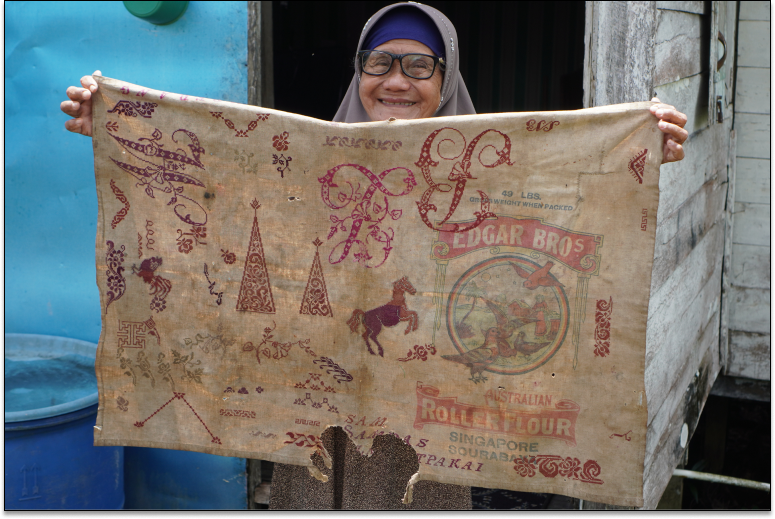
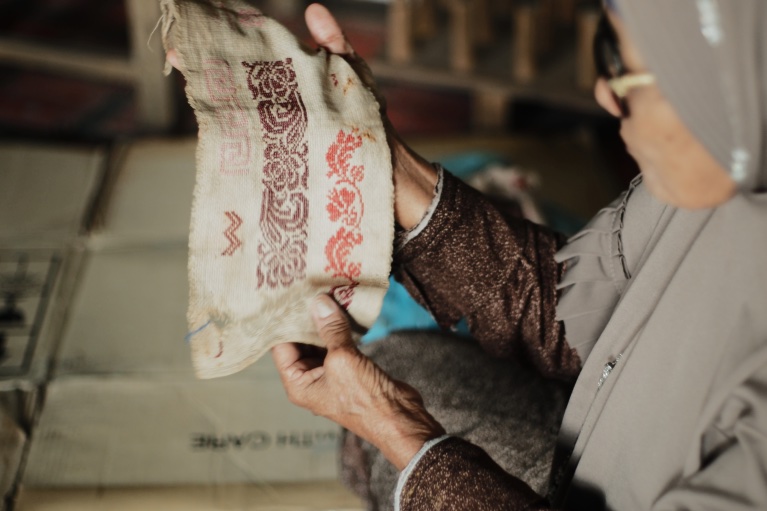
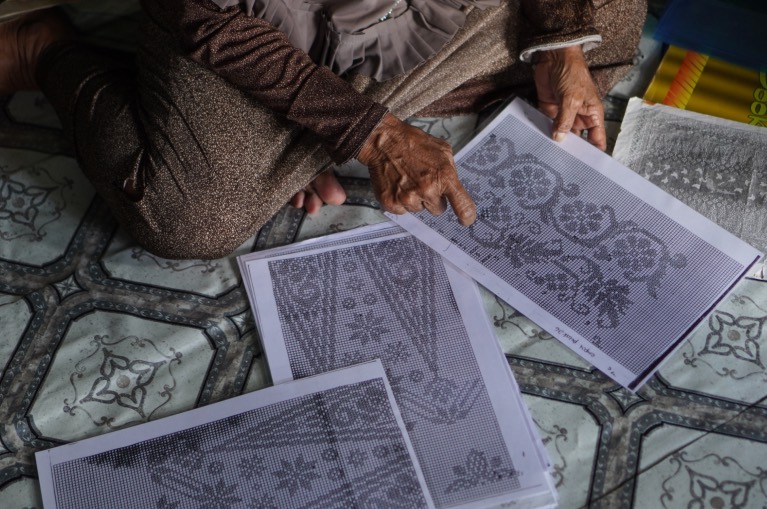
As guidance in making Songket pattern, Nek Wan made sketches on gridded papers. In the local dialect these sketches are called
sujibilang.
Nek Wan has been making this sujibilang since she was young, even when paper and pens were scarce. At that period, she made the sujibilang by making cross stitches of the pattern on burlaps.
One cross stitch on the sketch symbolizes 2 to 4 strands of supplementary weft that float across 8 strands of warp threads.
SONGKET SAMBAS weaving process
Songket Sambas was weaved with a traditional weaving tool. People of Sambas and surrounding areas call the tool as perumahan tenun.
Perumahan tenun usually made from wood, the midrib of enau plant (Arenga pinnata), and bamboo. Its various parts are the determining components to define a Songket Sambas uniqueness.
The structure of perumahan allows a production of upto 120 cm width woven fabric without any extension in the middle. The Karap Pattern section makes very complex songket pattern can be created easier, while the combs (sisir tenun) plays a big part in weaving tidy and tight cloth.
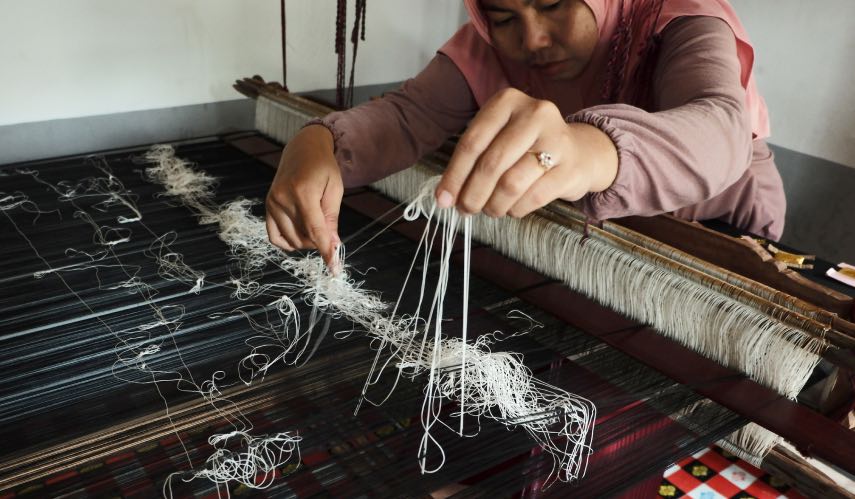
In the middle of expanded lungsi yarn, there’s a bundle of yarn called “Karap Pattern”, which function is to lift lungsi yarn to match the songket pattern.
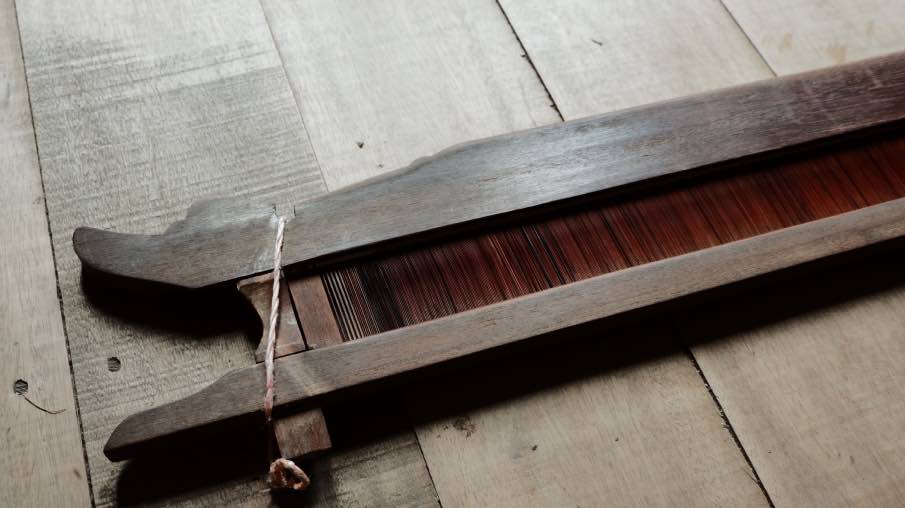
A skilled weaver like Bang Adi can make his own weaving tool. However, there’s a part which requires a very expertise in the making: the sisir tenun, or suri in local dialect.
In Sambas, there’s only 3 young sisir tenun crafter left. Pak Rahmat is the youngest one. Everyday, he arranged 1600 thin strip of enau’s midrib to make one piece of suri.
It takes 5 months to create one piece of suri, from gathering the materials to finishing part.
You can’t make a suri with just any enau. Pak Rahmat usually only uses the enau from neighboring village, Desa Pemangkat, because it’s agile but firm. Suri’s gear has to be flexible enough to hold the motion of lungsi yarn, while also strong enough to withstand the hit of the belida when pakan yarn are being tightened.

Rahmat, 50
The youngest suri crafter in Sambas
SURI MATERIALS +
SURI MAINTENANCE+
WEAVER’S RHTYM AND SKILL

the quality of the fabric
Click to listen to the rythm of traditional weaving tools in work!
The demand of traditional suri made from enau midrib used to be so high to meet the big amount of Songket orders from Sarawak and Brunei.
“There’s always been a policy from Brunei’s government to buy the finest Songket for the museum of national palace’s collection."
Andri
Cultural expert and lecturer at
Politeknik Negeri Sambas

The massive expand of weaving business required more manpower. Melayu people started to teach the weaving technique to other ethnicities in Sambas, like Madura people and Chinese.
After the racial conflict in 1999, a wave of Madura people exodus to the Pontianak brought along the weaving knowledge to the city. Many of the weaving family also started weaving business in Pontianak.

songket sambas spreaded to other areas
As it got assimilated with local culture, each region’s started to emerge their own new patterns and unique style.
Songket
Singkawang
Nowadays
2019
The initiation of weaving rebuilt by Nurhayadi and Rohani started to gain a lot of attention by various party. City-level government encouraged weavers to create pattern identify uniquely with Singkawang. The rise of popularity for natural dye yarn also changes the face of tenun Songket Singkawang.
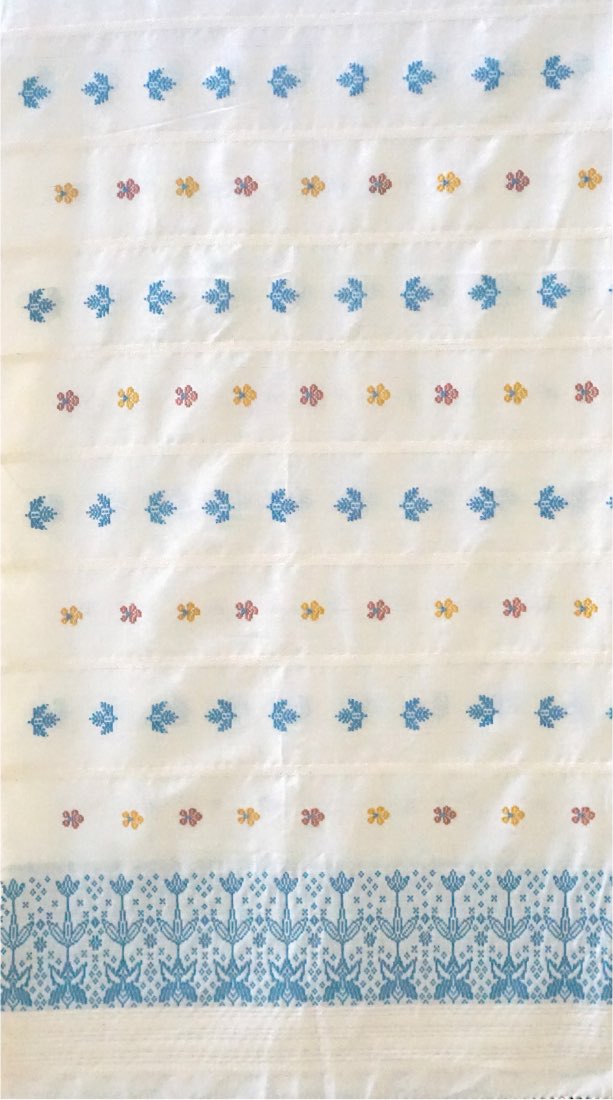
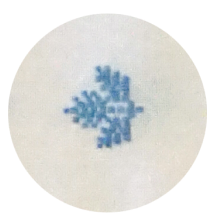
Pattern of Coban Seledri,
inspired by the shape of seledri’s (parsley) leaves that grow at the houses’ garden in Gang Kelapa.
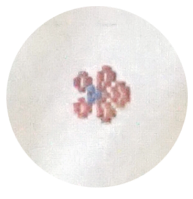
Pattern of Bunga Pinca,
inspired by Bunga Tapak Dara (Catharanthus roseus).

Pattern of lotus,
inspired by lotus plant which holds a lot of valuable meaning in Chinese culture.
Tenun Songket Tabur Gang Kelapa was weaved out of thinner cotton yarn, dyed with various local plants without golden thread —
past
present
Tenun Songket Tabur Gang Kelapa was weaved out of thinner cotton yarn, dyed with various local plants without golden thread —
past
present
Cotton yarn with natural dye now used to make songket pattern.
In many areas around the country, the regeneration of weavers is a big problem. Pak Andri Hidayat said, there’s only 2 new weavers emerged in every 10 retired ones.
But currently, Nurhayadi dan Rohani started to teach some of their neighbors to learn how to weave.
“I wish for young generation to also participate in developing woven fabric, even though we’re now in modern era, so this culture wouldn’t be vanished. My door is always open for any youth who wish to learn how to weave.”
Rohani
Songket Weaver
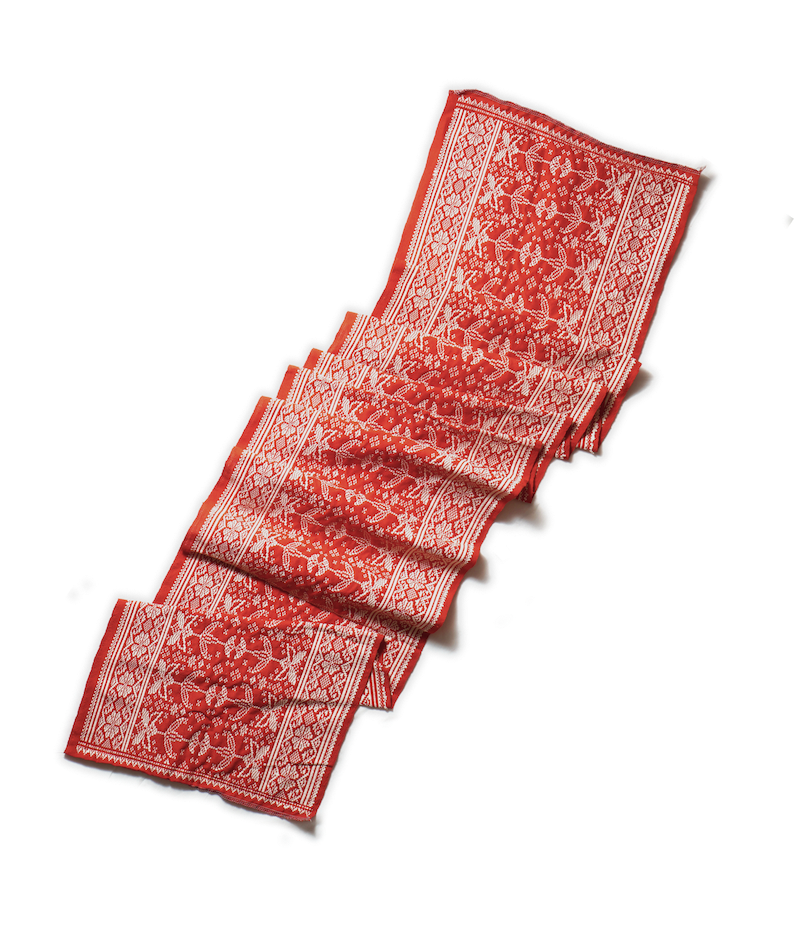
Gang Kelapa, which was the origin of Songket Singkawang’s tale,
hopefully will also be the witness of its development in the future.
Untaian Perjalanan Songket Singkawang
Laman interaktif ini adalah bagian dari rangkaian projek Cultural-assets & Vernacular Material oleh Innovation School The Glasgow School of Art dan The Borneo Laboratory.
Hadir dalam pameran bertajuk:
“Serumpun: Crafts across Borders”
Borneo Cultures Museum dan Think & Tink, Sarawak, 2022
Kontributor:
Teks: Gabriella Manurung
Video dan fotogrametri: Yohanes Arya Duta
Fotografi: Wisnu Purbandaru
Desain grafis: Imaniar R Waridha, Kathrinna Rakhmavikka
Pengembang website: Arum Adiningtyas



